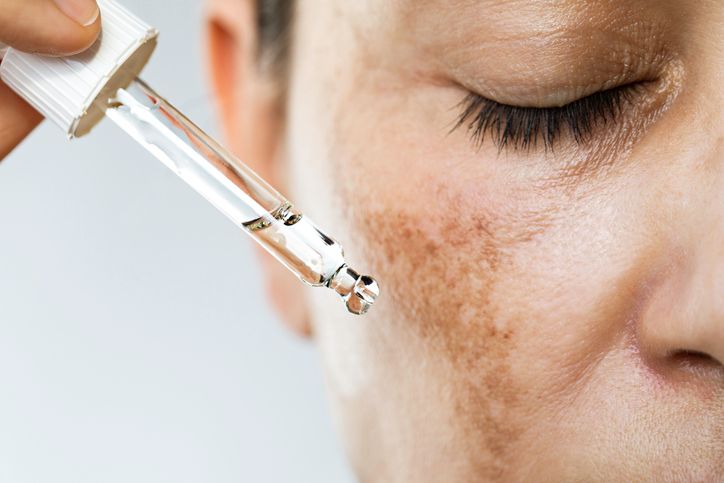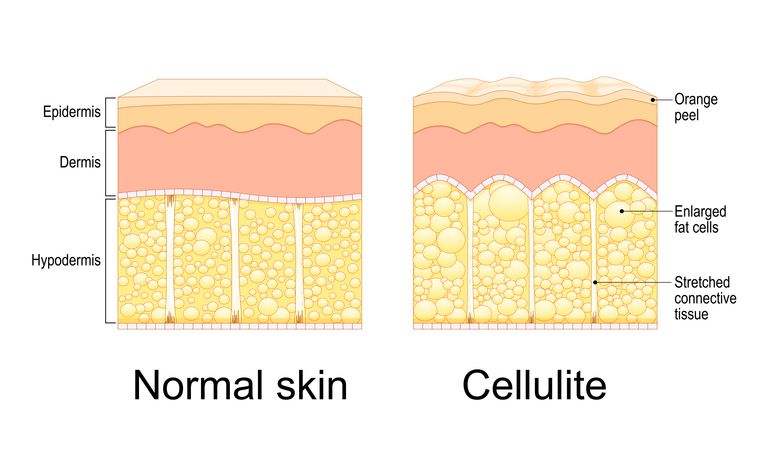
Author: Natalie Ng|Updated: 16 June 2025
Niacinamide, a form of vitamin B3, has become one of the most talked-about ingredients in skincare. It’s known for helping fade dark spots and improve uneven skin tone, but that’s just part of the story. This multitasking ingredient supports the skin barrier, helps calm irritated skin, and works well across all skin types, including sensitive or oily skin. It can also help with common concerns like acne scars, post-inflammatory marks, and dull texture, all while keeping your skin balanced and healthy. Whether you’re building a new skincare routine or looking to improve skin tone and texture, niacinamide fits in easily. It pairs well with other active ingredients like hyaluronic acid, vitamin C, and salicylic acid, making it a solid choice for both morning and nighttime routines. Ahead, we’ll break down what niacinamide really does, why it works, and how it can support your overall skin health.

Effect of Niacinamide 1: Inhibiting Melanin Production for Lighter Spots
Slowing Melanin Transfer Helps Reduce Dark Spots
Niacinamide doesn’t block melanin production. Instead, it slows the transfer of melanin between skin cells. This is important because when pigment moves freely, it can settle unevenly and cause dark spots or uneven skin tone—especially after breakouts, sun exposure, or inflammatory skin conditions.
A randomized clinical trial has demonstrated that niacinamide significantly reduces the appearance of dark spots, supporting its effectiveness with strong scientific evidence.
Pigment Movement Affects Skin Tone and Dark Spot Formation
Melanin-producing cells continue doing their job, but niacinamide changes how pigment spreads. It acts like a barrier in the process, making it harder for excess melanin to collect in certain areas. This supports:
• A more even skin tone
• Less visible dark spots and acne scars
• Reduced signs of post inflammatory hyperpigmentation
Additionally, by reducing the accumulation of pigment and supporting even skin tone, niacinamide helps control skin aging and maintain a youthful appearance.
Regular Use of Niacinamide Serum Supports Skin Clarity
Topical niacinamide works best at a concentration of 5–10%. For best results, it’s important to include niacinamide in a consistent skin care routine, ensuring it is applied daily as part of your regimen. Using it twice daily as part of your skincare routine can help fade dark spots over 4 to 8 weeks as your skin renews.
• It’s suitable for most skin types, including sensitive skin and oily skin
• It works well with other active ingredients like vitamin C, glycolic acid, and hyaluronic acid
• It supports overall skin health while improving skin texture and tone

Effect of Niacinamide 2: Strengthens Skin Barrier Function to Support Overall Skin Health
Stronger Skin Barrier Improves Skin Health and Texture
Niacinamide supports your skin’s natural barrier, which plays a major role in how your skin looks and feels each day. The skin barrier is your outermost layer—it helps keep moisture in and blocks out irritants, bacteria, and other environmental triggers. When that barrier becomes weak, you’re more likely to deal with skin concerns like dryness, irritation, redness, and even flare-ups in sensitive skin. A strong skin barrier also helps with reducing redness caused by irritation.
What Happens When the Skin Barrier Gets Stronger
Regular use of topical niacinamide strengthens the skin barrier in several ways:
• Boosts ceramide levels: Ceramides are natural fats that help seal in moisture and protect the skin. More ceramides mean better hydration and fewer signs of dry skin or irritation.
• Increases lipid production: Niacinamide helps your skin make more natural lipids, which adds to a smoother, more resilient surface and helps maintain overall skin health.
• Reduces transepidermal water loss (TEWL): By limiting how much water escapes from your skin, niacinamide keeps your skin hydrated longer without the need for constant reapplication of moisturizers.
• Improves cell cohesion: It strengthens the bonds between skin cells, making the surface more resistant to harsh weather, pollutants, and daily wear from UV rays and cleansing.
Improved barrier function also plays a key role in calming irritated skin and supporting recovery from environmental stress.
Barrier Repair Supports All Skin Types
These effects are especially useful for people with sensitive skin, inflammatory skin conditions, or those recovering from treatments that leave the skin more exposed. A healthy skin barrier also makes your skincare routine more effective by helping active ingredients like hyaluronic acid or lactic acid absorb properly while minimizing the risk of irritation.
You can support your skin barrier with a niacinamide serum (around 5%) used twice a day. Combine it with a gentle cleanser and a broad spectrum sunscreen to help keep your skin strong, hydrated, and protected over time. The benefits of niacinamide are recognized in both clinical and aesthetic dermatology for supporting overall skin health and improving appearance.
Read More
Book Now to Experience
PicoCure Pigmentation Removal Treatment
1 Minute Self-Registration
Date should not be before minimal date

Effect of Niacinamide 3: Regulates Oil Production to Improve Oily Skin and Shine
Sebum Balance Supports Clearer, Healthier Skin
Niacinamide helps regulate oil production without drying out the skin. Instead of forcing your skin to stop producing oil, it works with your skin’s natural processes to maintain a healthy balance. This keeps the surface from becoming overly shiny or greasy, especially in areas like the T-zone.
This oil control is important not only for improving skin texture but also for reducing clogged pores, acne breakouts, and enlarged pores. As sebum levels become more balanced, the overall appearance of your skin becomes smoother and more refined.
Additionally, niacinamide's broad therapeutic benefits have made it a focus in anti infective drug discovery, further supporting its role in enhancing overall skin health.
Oil Control Without Damaging the Skin Barrier
Unlike harsh treatments that strip away moisture, niacinamide reduces excess sebum while keeping the skin barrier intact. Regular use supports:
• Smaller-looking pores due to balanced oil production
• Less shine in oily areas, especially the forehead, nose, and chin
• Longer-lasting makeup wear without sliding or fading
• Comfortable skin that doesn’t feel greasy or tight
Visible improvements often start within 2 to 4 weeks of twice-daily application. The skin gradually feels more balanced, and unwanted shine becomes easier to manage.
Targeted Application for Oily Areas
Niacinamide works well as a targeted solution for areas prone to excess oil. Applying a 5% concentration to your oily zones—typically the T-zone—helps reduce surface oil while leaving drier areas unaffected.
Use the serum after cleansing in the morning and evening. Focus on oil-prone regions first and adjust as your skin responds. This approach keeps your skin hydrated where needed and balanced where oil builds up too quickly.
Less Shine and More Comfort Throughout the Day
By supporting better oil control, niacinamide helps reduce midday shine and keeps your complexion looking fresh. When your skin maintains balanced sebum levels, it’s less likely to feel greasy or sticky.
With regular use:
• The forehead and nose stay matte longer
• Pores look smoother and more refined
• Makeup stays in place without slipping
• Touching your face feels cleaner, without leaving a residue

Effect of Niacinamide 4: Calms Irritated Skin and Reduces Redness
Anti-Inflammatory Properties Help Ease Skin Discomfort
Niacinamide helps reduce skin inflammation by targeting the source of irritation rather than just masking it. When skin reacts to stress—like environmental damage, strong exfoliants, or barrier disruption—it releases inflammatory signals. Niacinamide works by lowering these signals, leading to less redness, swelling, and discomfort.
It’s a practical option for treating inflammatory skin conditions and is gentle enough for sensitive skin. Regular use can improve the appearance of blotchy areas while promoting a more even skin tone.
Gradual Relief for Sensitive and Reactive Skin
While niacinamide is known for calming skin, the effects don’t happen instantly. It helps restore balance over time, supporting recovery rather than offering quick fixes. Signs of relief include:
• A mild cooling effect during application
• A tingling sensation that fades within minutes
• A smoother skin feel as inflammation decreases
• A slow but visible improvement in redness over several days
Starting with a lower concentration (around 2–5%) makes it easier to monitor your skin’s reaction, especially if you're already dealing with irritation. Combining niacinamide with other gentle ingredients like chamomile or aloe vera can further support recovery.
Redness After Skin Treatments Becomes Less Noticeable
After treatments like exfoliation, facials, or microdermabrasion, skin is often red, tight, and sensitive. Niacinamide can help restore comfort and calm these symptoms. Its anti-inflammatory action supports healing and barrier repair, making recovery feel smoother and less uncomfortable.
Applying a 5–10% niacinamide serum right after a procedure can:
• Reduce the heat and burning sensation that may follow exfoliation
• Lessen visible redness and swelling within a few hours
• Help skin feel calm and cool, like a gentle soothing layer
• Minimize puffiness around treated areas
Book Now to Experience
PicoCure Pigmentation Removal Treatment
1 Minute Self-Registration
Date should not be before minimal date

Effect of Niacinamide 5: Improves Skin Texture by Supporting Collagen and Cell Turnover
Skin Becomes Smoother Through Strengthened Barrier and Repair
Niacinamide helps improve skin texture not by directly increasing collagen levels, but by creating the right environment for your skin to repair itself. It strengthens the skin barrier, regulates oil, and reduces irritation—all of which allow your skin to function at its best. This makes it easier for skin cells to renew properly, leading to smoother texture and more even tone over time.
When the barrier is strong and inflammation is under control, collagen production becomes more stable. Niacinamide plays a supportive role in this process by reducing damage and helping the skin maintain hydration, which are both essential for skin aging prevention and improving surface texture.
Clearer Texture Without Harsh Active Ingredients
Niacinamide is gentle but effective, especially for people who want to improve skin texture without strong exfoliants or retinoids. With regular use:
• Rough patches soften gradually as skin renews
• Fine lines become less noticeable with better hydration
• Uneven areas smooth out through healthier cell turnover
• Skin appears more refined, without flakiness or tightness
This makes niacinamide suitable for dry skin, sensitive skin, and oily skin—all of which can experience roughness or unevenness due to barrier damage or inflammation.
Best Way to Use Niacinamide for Texture Benefits
Apply 2–3 drops of a 5–10% niacinamide serum to clean skin, morning and night. Gently pat the product in rather than rubbing. Follow with a moisturizer to lock in hydration and support the active ingredients.

Effect of Niacinamide 6: Protects Skin from Environmental Stress and Oxidative Damage
Antioxidant Support Defends Against Premature Skin Aging
Niacinamide helps protect skin by neutralizing free radicals—unstable molecules triggered by UV rays, pollution, and blue light exposure. These stressors break down collagen and disrupt healthy skin function, leading to early signs of skin aging, dullness, and dark spots.
By strengthening the skin barrier and boosting antioxidant capacity, niacinamide helps maintain healthy skin even under constant environmental exposure. This protective function is especially important for those living in urban areas or spending extended time in front of screens or under the sun.
Skin Barrier Niacinamide Shields Against Daily Damage
Niacinamide creates a layer of protection that supports your skin’s natural defense system. When used regularly:
• Skin becomes more resistant to UV-related oxidative damage
• External pollutants have less impact on your skin barrier function
• The risk of inflammation and pigmentation caused by environmental triggers is reduced
• Your skin maintains a brighter, more even appearance over time
These protective effects work alongside sunscreen but don’t replace it. Niacinamide adds an extra layer of support in defending against damage caused by exposure to harmful external elements.
Long-Term Protection Builds a Healthier Complexion
Applying a niacinamide serum (5–10%) twice daily reinforces your skin’s ability to recover from environmental stress. With regular use, your skin becomes more resilient and better able to prevent signs of premature aging—such as dark spots, fine lines, and uneven tone.
Book Now to Experience
PicoCure Pigmentation Removal Treatment
1 Minute Self-Registration
Date should not be before minimal date

Professional Treatment That Boosts the Effects of Niacinamide for Dark Spots
Laser-Based Support to Fade Stubborn Pigmentation
While niacinamide works gradually to improve skin tone and fade dark spots, combining it with professional treatments can lead to faster, more noticeable results. One option that pairs well with topical niacinamide is the PicoCure Pigmentation Removal Treatment—a non-invasive laser procedure designed to target both surface-level and deep pigmented spots.
This treatment uses a powerful combination of picosecond and nanosecond laser technology with four different wavelengths (1064nm, 650nm, 585nm, 532nm). It targets pigmentation at all skin depths, breaking it into tiny particles that the body can naturally remove. It supports people dealing with melasma, acne scars, dark spots, uneven skin tone, and other common skin concerns.
How the Treatment Works with Niacinamide
Niacinamide and PicoCure address dark spots in different—but complementary—ways. Niacinamide helps regulate melanin transfer, reduce inflammation, and support skin barrier function, while PicoCure directly targets the melanin buildup itself. Together, they create a powerful routine for fading pigmentation while improving skin texture, skin tone, and overall skin health.
• Laser energy shatters pigmented lesions, reducing visible dark spots and post inflammatory hyperpigmentation
• Niacinamide supports recovery, boosts hydration, and reduces the risk of irritation
• Collagen production is triggered during treatment, helping with firmness, elasticity, and a more uniform complexion
Advantages of PicoCure for Skin Brightening
PicoCure offers several benefits that make it ideal for enhancing the effects of topical niacinamide:
• Safe for most skin types, including sensitive skin and darker tones
• FDA-cleared and CE-certified, ensuring a safe experience with minimal risk
• No downtime required—most users return to normal activities right after treatment
• Improves multiple concerns at once: from dark spots and acne scars to fine lines and enlarged pores
• Stimulates collagen growth, improving skin radiance and smoothness naturally over time
Maximize Your Results with a Combined Approach
To get the best results, apply niacinamide serum regularly between sessions to maintain hydration, reduce inflammation, and support long-term skin repair. This dual approach helps prevent new pigmentation while treating existing spots more effectively.
Ready to target dark spots more effectively? Book your PicoCure Pigmentation Removal Treatment today and start seeing clearer, smoother skin.
New Beauty's PicoCure Pigmentation Removal Treatment
Choosing the Right Niacinamide Products for Your Skin Type
Product Types That Deliver Visible Results
Niacinamide is found in a wide range of functional skincare products, and the best choice often depends on your skin type and specific skin concerns. Whether you’re targeting post inflammatory hyperpigmentation, enlarged pores, or uneven skin tone, selecting the right format can make a difference in how your skin responds.
Common forms include:
• Niacinamide serum: Ideal for layering in your skincare routine, especially in 5–10% concentrations
• Creams and moisturizers: Often combined with hydrating ingredients like hyaluronic acid for dry skin
• Toners and essences: Lighter options that prep the skin and improve absorption of other active ingredients
• Niacinamide supplements: Sometimes used as part of broader treatment options under medical guidance, especially for inflammatory skin conditions
Matching Products to Skin Types and Concerns
Choosing the right niacinamide product starts with understanding your skin’s behavior:
• Oily skin benefits from lightweight serums or water-based gels that help regulate sebum without clogging pores
• Dry skin may respond better to cream-based products that include ceramides or vitamin B to lock in moisture
• Sensitive skin should start with a lower concentration (2–5%) to reduce the chance of irritation
• Combination skin can benefit from spot-targeting or applying different products to different areas (e.g. serum on the T-zone, cream on dry patches)
Book Now to Experience
PicoCure Pigmentation Removal Treatment
1 Minute Self-Registration
Date should not be before minimal date

Combining Niacinamide with Other Active Ingredients in Your Skincare Routine
Ingredient Pairings That Work Safely With Niacinamide
Niacinamide pairs well with many common active ingredients, making it easy to include in both simple and advanced skincare routines. It works by supporting the skin barrier and calming inflammation, which helps reduce irritation from stronger treatments and supports overall skin health.
These combinations can help you get more out of your routine without overloading your skin:
• Niacinamide + vitamin C: Helps fade dark spots and brighten skin tone. These ingredients can be used together in the morning for improved skin radiance and antioxidant protection.
• Niacinamide + glycolic acid or lactic acid: Supports exfoliation while reducing the risk of irritation. Use acids first, then follow with niacinamide to restore moisture and calm the skin.
• Niacinamide + salicylic acid: Ideal for oily skin or acne treatment. Salicylic acid unclogs pores, while niacinamide reduces redness and regulates oil.
• Niacinamide + retinol: Niacinamide strengthens the skin barrier and helps reduce irritation caused by retinol. Use niacinamide in your nighttime routine, either before or after applying retinol depending on the formula.
• Niacinamide + broad spectrum sunscreen: Niacinamide helps protect the skin from UV-related stress and pairs well with SPF during the day to prevent dark spots and skin ageing.
Layering Order and Application Tips
To get the most out of these combinations:
• Apply thinner, water-based serums like niacinamide first
• Follow with heavier creams or oils, depending on your skin type
• Use exfoliating acids at night and alternate with niacinamide if your skin feels sensitive
• Always finish your morning routine with a broad spectrum sunscreen, especially if using actives like glycolic acid or vitamin C

Quick-Start Skincare Routine Using Niacinamide
Simple Routine to Begin Using Niacinamide Safely
If you’re just starting out with niacinamide, you don’t need a complicated routine to see results. A few steps using the right products will help you improve skin texture, tone, and hydration while reducing the appearance of dark spots and irritation.
This beginner-friendly approach works for most skin types, including oily skin and sensitive skin:
• Step 1: Gentle Cleanser
Start and end your day with a mild, non-stripping cleanser. This keeps your skin barrier intact and prepares the skin to absorb active ingredients more effectively.
• Step 2: Niacinamide Serum (5–10%)
Apply a few drops of niacinamide serum to clean, damp skin. Use gentle patting motions and avoid rubbing. This step helps support the skin barrier, improve skin texture, and fade dark spots.
• Step 3: Moisturizer
Choose a formula that suits your skin type. For dry skin, go for something with hyaluronic acid or ceramides. For oily skin, a lightweight gel-based moisturizer works well.
• Step 4 (Morning only): Broad Spectrum Sunscreen
Finish your morning routine with SPF 30 or higher. Sunscreen prevents further pigmentation and supports the effects of niacinamide by protecting against UV rays.
Evening Adjustments for a Nighttime Routine
At night, follow the same steps—just skip the sunscreen. This is a good time to pair niacinamide with other functional skincare products, such as those with glycolic acid or lactic acid, used on alternate nights to avoid irritation.
This routine creates a solid foundation that supports healthy skin without overloading it with too many active ingredients at once.
Book Now to Experience
PicoCure Pigmentation Removal Treatment
1 Minute Self-Registration
Date should not be before minimal date
FAQ
Can niacinamide be used with other pigmentation treatments like azelaic acid or tranexamic acid?
Yes, niacinamide can be safely combined with other pigmentation treatments such as azelaic acid and tranexamic acid. These ingredients work in different ways to reduce melanin production and inflammation. Azelaic acid helps unclog pores and target post inflammatory hyperpigmentation, while tranexamic acid helps reduce melasma. When used together in a skincare routine, niacinamide can help support the skin barrier, reduce irritation, and enhance the brightening effects of these active ingredients.
Is niacinamide safe for long-term use on all skin types?
Niacinamide is considered one of the safest active ingredients for long-term use. It is well tolerated by most skin types, including dry skin, oily skin, and sensitive skin. Unlike many other ingredients used for treating melasma, acne scars, or dark spots, niacinamide rarely causes irritation or peeling. Because it helps support overall skin health and improve skin texture over time, it’s often recommended as a regular part of both morning and nighttime skincare routines.
Can niacinamide help with dark circles under the eyes?
Niacinamide can improve the appearance of dark circles caused by pigmentation or thinning skin. It helps by strengthening the delicate under-eye skin barrier, reducing inflammation, and supporting collagen production. Many eye cream formulations include niacinamide along with ingredients like hyaluronic acid and caffeine. While it won’t work on vascular (blue or purple) dark circles, it can help fade pigmentation-related darkness over time.
Does niacinamide help prevent skin ageing caused by UV rays?
Yes, niacinamide offers protective benefits against skin ageing caused by UV rays. It doesn't replace sunscreen, but when used alongside a broad spectrum sunscreen, it helps reduce oxidative stress, inflammation, and pigmentation caused by sun exposure. It also supports the repair of UV-induced skin damage by encouraging healthier skin cell function and promoting collagen production, which helps with reducing fine lines and uneven skin tone.
What’s the difference between niacinamide and vitamin B?
Niacinamide is a specific form of vitamin B3, one of the essential nutrients for skin function. Vitamin B refers to a broader group, including B1, B2, B5, B6, and others. Only vitamin B3 in the form of niacinamide has been clinically shown to improve skin concerns like acne, melasma, oily skin, and pigmentation. It’s also the most commonly used vitamin B in functional skincare products due to its wide range of benefits and minimal risk of irritation.
Recommended Articles
COPYRIGHT© NEW BEAUTY MANAGEMENT LIMITED 2025. ALL RIGHT RESERVED.





